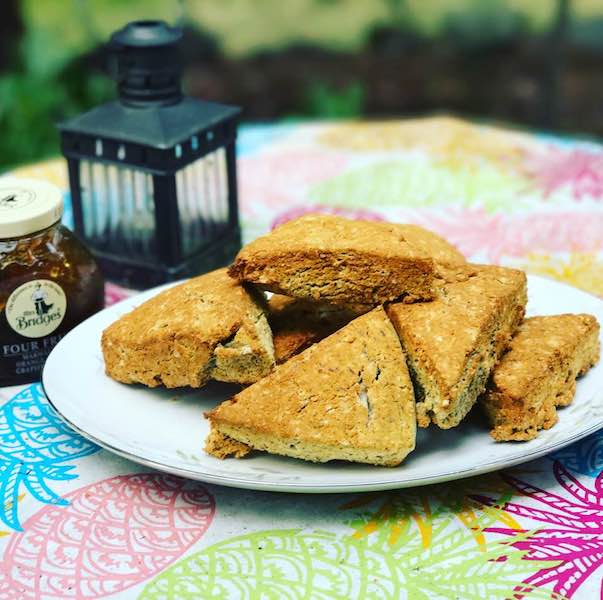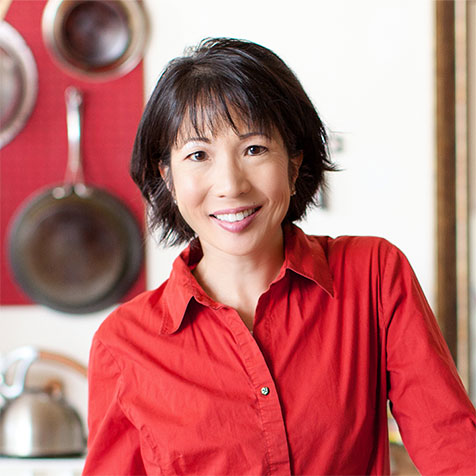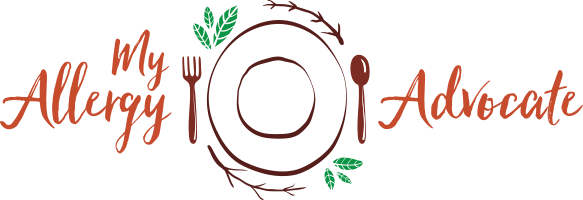
You know you’re ready for some advanced kitchen basic skills when you want to make more complex baked goods and dishes that you can’t customize anywhere else but at home. Read my three steps to making new foods with confidence and flair. Photo by Imei Hsu taken on an iPhone 7 Plus.
Note: This post is Part Two in a three-part series on Scratch Cooking and Kitchen Basics. If you haven’t had a chance, please skim Scratch Cooking Basics Part One to see what was covered.
If you follow a medically-necessary diet and have been trying to eat accordingly, you have probably come to the conclusion that eating out and eating processed foods don’t just conflict with your diet, they can damage your health, reverse positive progress in your battle against your disease, and leave you fatigued, undernourished, or gravely ill.
All of that just sucks.
And so, one way or another, kicking and screaming, or perhaps with excitement mixed with fear, you’ve decided to give scratch cooking a whirl. Maybe you’ve cleaned your kitchen, bought a few new cooking tools and gadgets, pushed a cart around your grocery store’s perimeter (where the produce, meats, dairy, and unprocessed foods are located), and gotten a bit more comfortable making a few simple ingredient meals.
This calls for some celebration and congratulations! You made it! You’re alive! Woo hoo! This is no small feat. Most of the people around you are cramming garbage food full of empty calories, unhealthy fats, and excess sugars in their pie holes, and taking pictures of decadent foods to put on their Instagram, while you hold a salad with a dried up piece of chicken diced on top, thrilled that you can eat an avocado without feeling sick to your stomach.
It’s one step. And I will applaud that step, because I know what it feels like to go from laying in my bed and feeling about as lifeless as a rock until my body was able to absorb nutrients and bring some energy back into me. Feeding yourself is a big deal.
What the rest of the world doesn’t understand — but painfully, you do — is that if you did not grow up learning how to cook from scratch, it’s a skill that isn’t easily adopted as an adult. We are more likely taught to use every shortcut as an advantage over time and effort. People are being taught that it’s not just easier, but somehow better living to drink your meal in the form of a replacement shake rather than learn how to balance your meals for vitamins and minerals.
However, in the real world people treat food made from scratch differently than industrially-made food. Case in point: at the Beat the Blerch running races, foods such as donuts, Nutella, candy, cookies, and cake are served at the start of the race, at the aid stations, and at the finish line. Most serious runners will refuse all sweet treats because it will do a number on their guts. However, I observed in 2015 and 2016 as a volunteer and as a runner that more people stopped to eat cake during the race when they discovered who had made the cake. Once it was understood that the cakes were from a much-coveted local bakery that specializes in making cakes, the cake magically disappeared. People made an exception.
Our biggest challenge comes right after we have barely managed to keep ourselves from starving by making about five to seven repeatable dishes. Around the end of the first month of eating the same meals, with just a few small variations (like chicken tacos instead of beef tacos, and a lime dressing on that shrimp dish instead of the usual cocktail sauce because you’re avoiding tomatoes), that you suddenly get the idea of investing some money in a cookbook.
Bam, you’re on Amazon, perusing the cookbook section using keyword searches, such as “Paleo”, “Food Allergies”, “Dairy Free”, or “Vegetarian Foods for Heart Health.” After about five attempts, you settle on a couple of cookbooks, order them, and with Amazon Prime and Same-Day Shipping, a package is at your door. You rip into the box, eagerly open the first book, start flipping through the pages, and select a recipe that instantly makes your mouth drip saliva onto the glossy photograph astride a pile of bricks that just happen to be next to a distressed picnic table with wooden spoons and checkered napkins.
Two hours and about half of the bowls, pots, measuring spoons, and three-quarters of all the available countertop space in your kitchen later, you have a main dish that doesn’t look anything like the photograph. And by description, it doesn’t taste anything like it was supposed to either.
Well, crap. You just wasted a good afternoon, a bunch of groceries, and you’re still hungry.
Why? You can’t eat a single one of the recipes “as is.” All-purpose flour has to be replaced with a gluten-free version that doesn’t make you sick. Milk needs a substitute without losing creaminess. You substituted brown rice syrup for pure cane sugar because pure cane sugar makes your tummy hurt. You took out the nuts completely, left out the nutmeg, added a little more cinnamon, and axed the garlic.
If you’re lucky, you eat a little bit of what you’ve made because it’s just barely palatable, and sadly slide the rest of it into the bin and call it a day.
This post is all about cooking from scratch at another level: developing your own substitutions and creating new dishes, with or without a recipe. Read on for more.
Focus On What You Can Eat, Not What You Can’t
When it’s time to develop something new to eat, it’s often easier to start with ingredients that you know you can safely eat, and then combine them with other ingredients that compliment flavors and textures, and fill the macronutrients that make up the typical meal: protein, fats, and carbohydrates.
For example, the proteins I can eat include fish, chicken, beef, pork, rabbit, lamb, bison, shellfish, turkey, goose, hen, and a variety of other animal protein as they are available.
The oils and fats I can eat include avocado, olive oil, coconut oil, animal fat, flaxseed oil, and canola (though I limit it). I need to remember that coconut oil is a solid at room temperature or cooler.
The carbohydrates I eat come from vegetables, rice, sweet potato, gluten free flours like arrowroot, tapioca, rice, and coconut flour. I can have a small amount of sorghum flour; it has a distinctive flavor that needs a sweetener to hide it’s unusual taste.
Finally, I stock a variety of fresh herbs and spices. These can be added to an oil to create a marinade, such as rosemary and olive oil with salt and pepper, or blended to make a sauce, such as cilantro, basil, and oil. One of my favorites is mint; another one is the subtle flavor of French chervil.
When you focus on what you can eat, you’ll feel more positive about your options. You’ll feel less deprived and more empowered. I can put strawberries into fifty different things, from ice tea to jam to a gluten-free strawberry tart. Cauliflower has hundreds of recipes, and not all of them need cheese or wheat to make it a welcome food to your ravenous tummy.
Memorize Your Favorite Substitutions
Let’s say you want a lamb dish with a sweet sauce on the side, but your tummy doesn’t like cane sugar (a common complaint among people with GI issues, as sugar can be irritating). However, you discover that you can have honey. Instead of buying a bottled sauce that has things you cannot eat, you can memorize a set of substitutions that work well in a variety of recipes.
Here are a few examples from my own kitchen that I use all the time:
1 tsp. honey + 1 teaspoon dijon mustard = dipping sauce for lamb
1/4 tsp vinegar + 1 tsp baking soda —> replaces each teaspoon of baking powder
coconut aminos = soy sauce + any sweet ingredient = tamari
1/4 cup full fat coconut milk + 1/4 cup water = 1/2 cup whole milk
diced fennel bulb + horseradish = garlic and onions
You will need substitutions when the removal of a key ingredient changes the overall chemistry required to make a food brown, crisp, leaven and rise, or remain flexible after baking.
For example, if you can’t add emulsifiers such as xanthan gum or guar gum to your food because they makes you ill, simply removing it from a set of ingredients may leave you with an end product that is stiff, cardboard-like, or flat. You will want to try a variety of substitutes that produce the same effect without using the same source ingredients.
Look For A Template, and Fill In the Blanks
Whenever I see a plate of food that looks interesting to me, I take a picture. If I’m flipping through a magazine in a doctor’s office, or scrolling through recipes online, I’ll save the recipe for later in a file, and then get to work.
Identify all the ingredients in the photo, or take a look at the recipe if you have one. Cross out everything you can’t have, and make a note of any substitutions that come to mind. If there is no substitution, think for a moment of what flavor category will go missing if you remove the ingredient, or what might happen to texture.
Any changes are going to influence a food’s moisture balance, texture, flexibility, flavor, and cook or bake time. For example, I recently made scones using a recipe as a template. The original baking temperature and time was 400F for 15 minutes. The actual baking temperature and time of my version of it, after making changes and removing ingredients that had no replacement, was 400F for 15 minutes, and almost 20 additional minutes at 350F to prevent the scones from getting too hard on the outside before the more moisture-laden version I made could bake from the inside. By baking it on the lower temperature after an initial bake at a higher temperature, I created a bake that had a nice crunch on the outside, and thorough bake on the inside that kept the scones good for seven days.
You read that right: seven days. Paul Hollywood from the Great British Bakeoff would be proud!
I know what you’re thinking: that’s too hard. I’m going to buy pre-made gluten-free breads and baked goods and save myself time and effort!
Hang on for a moment. If those were healthy, safe foods for me to eat, I’d have done the same thing a long time ago. And in fact, I did try some of those top-of-the line brand name gluten free baked goods, which have xanthan gum, guar gum, pea protein (I can’t eat legumes), almond flour (I can’t eat almonds and most nuts), bean flour, and soy. And so, no surprise, all of them made my guts so sick, I stopped buying them and just went without.
And I did not die. Going without those commercial made breads is far better than the swan song coming out of my mouth for days or weeks after eating these breads.
Instead, it makes a lot more sense to wait for the all-clear from your gut, especially right after a diagnosis of a food allergy or autoimmune disease. When it’s the right time, look for a food you’d like to have, and customize the ingredients to something your tummy and your body will truly enjoy.
Cookbooks and recipes can be great templates to give you an idea of what the finished product should look and taste like. However, in this stage of advanced kitchen basics, you give yourself permission to experiment, to try a substitution, and if it takes two or three tries, that’s totally OK. I know of home chefs who have taken a couple of years to perfect a recipe, as their needs, their guts, and their sensitivities change over time.
If some day I can have almond flour again, there is so going to be a party! But until then, focusing on what I can have, memorizing clever substitutions that really work, and using recipes and photos of food as templates help me create a new dish or combination of foods at a rate of two to three creations a week.
Let me know if you come up with something new and exciting for yourself after reading this post. I have faith in you that you can make food fun again without raiding the Halloween candy aisle. Go forth and eat all the things you can!




